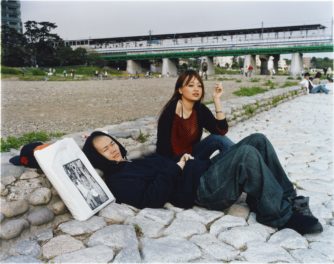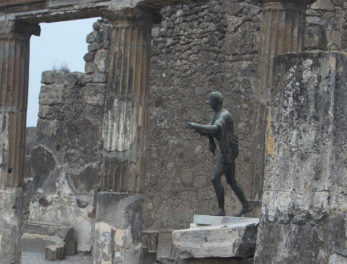Drawing was central to the artistic process of Michelangelo Buonarroti, one of the most creative and influential artists in European history. He sketched avidly to work through ideas for his paintings, sculptures, and architectural designs. He also drew to specify the dimensions of marble blocks, to study the way muscles worked, to assist pupils, to offer tribute to friends and loved ones, and to express his personal religious beliefs.
But while Michelangelo created an estimated 28,000 drawings in his lifetime, only about 600 survive today. He burned many of his drawings himself—afraid, a biographer said, of revealing the “labors” of his creative process.
Opening today at the Cleveland Museum of Art and coming in February 2020 to the Getty Center is Michelangelo: Mind of the Master, a rare opportunity to see 28 of the artist’s finest surviving drawings. The exhibition explores the full range of Michelangelo’s work through a key selection of sheets, from preparatory compositional sketches to detailed figure studies.

The Holy Family with the Infant Saint John the Baptist (The Rest on the Flight into Egypt), about 1530, Michelangelo Buonarroti. Black and red chalk with pen and brown ink over stylus, 11 × 15 1/2 in. The J. Paul Getty Museum, 93.GB.51. Digital image courtesy of the Getty’s Open Content Program
Drawn from the collections of the Teylers Museum in Haarlem, the Getty Museum, and the Cleveland Museum of Art, the drawings show Michelangelo’s distinctive approaches to drawing for sculpture, painting, and architecture. They include examples drawn in different media, from initial stylus work, to pen and ink, to black and red chalks.
The works in the exhibition span the arc of Michelangelo’s long life—he lived to age 88—and include designs for celebrated projects such as the Sistine Chapel ceiling, the Medici Chapel tombs, Saint Peter’s basilica, and The Last Judgment.
Today, these rare sketches stand as extraordinary works of art in themselves, as well as together offering an intimate glimpse into the thought processes of a creative pioneer at work.

Studies of figures and limbs; figure sketches, 1511, Michelangelo Buonarroti. Red chalk, heightened with white, 11 × 8 7/16 in. Teylers Museum, Haarlem, purchased in 1790. Image © Teylers Museum, Haarlem
Michelangelo: Mind of the Master is on view at the Cleveland Museum of Art from September 22, 2019 to January 5, 2020, and at the Getty Center from February 25 to June 7, 2020.
Organized by the Teylers Museum in collaboration with the Getty Museum and the Cleveland Museum of Art.
The exhibition is supported by an indemnity from the Federal Council on the Arts and the Humanities.





Comments on this post are now closed.